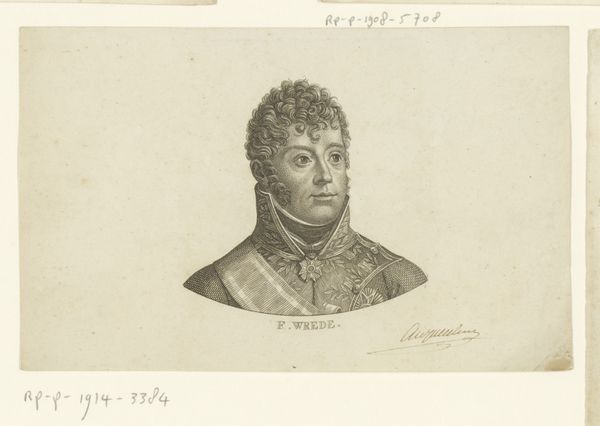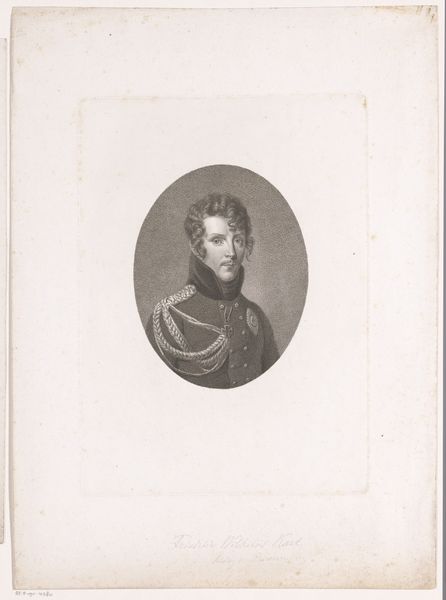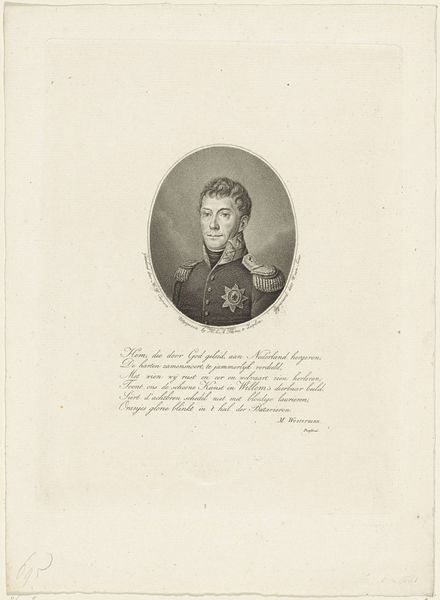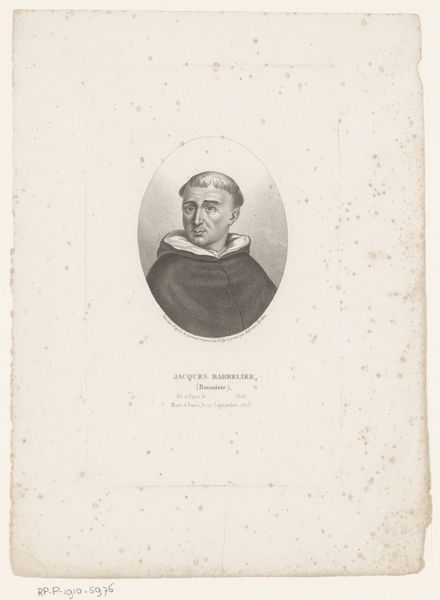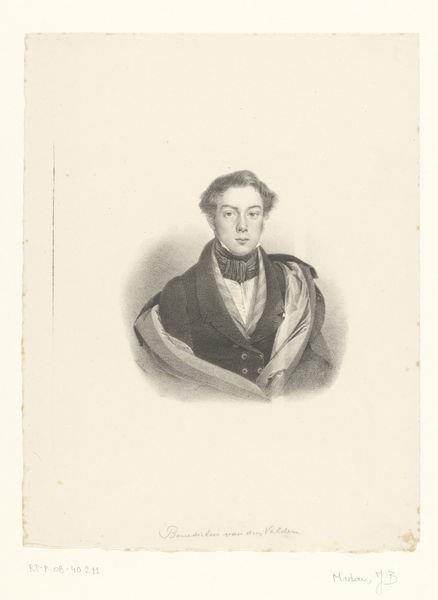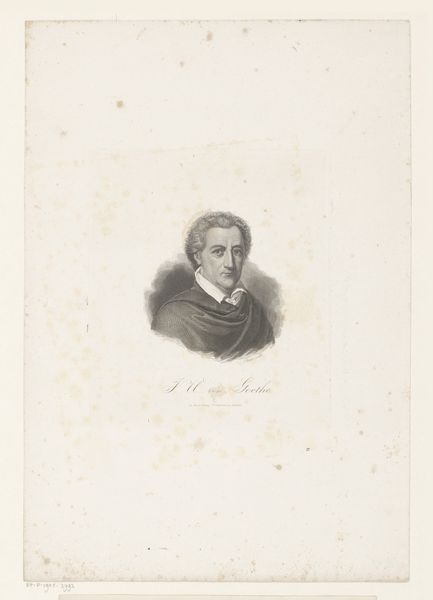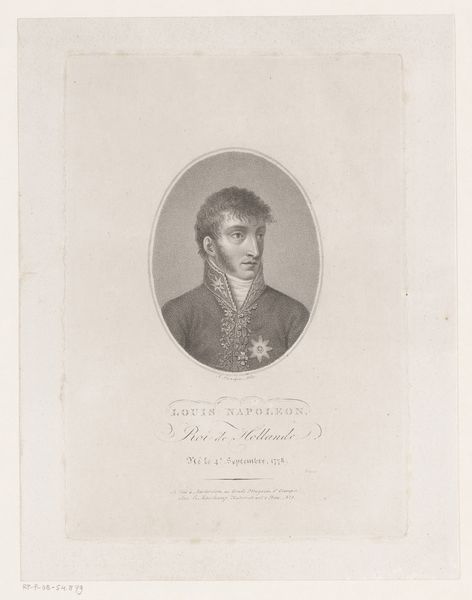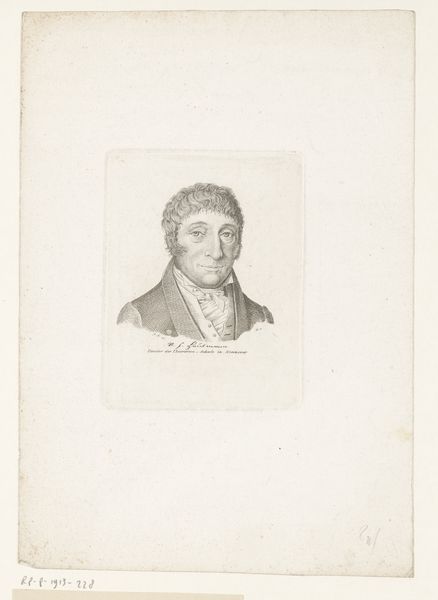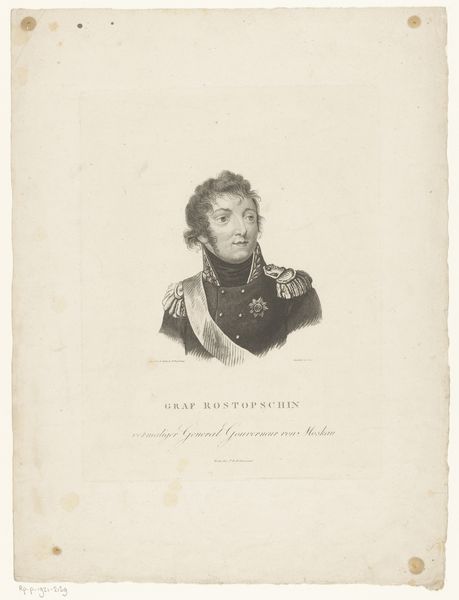
engraving
#
portrait
#
medal
#
neoclacissism
#
old engraving style
#
history-painting
#
engraving
Dimensions: height 112 mm, width 86 mm
Copyright: Rijks Museum: Open Domain
Curator: Here we have an engraving identified as "Portret van Arthur Wellesley of Wellington", placing its creation somewhere between 1775 and 1840 by Ernst Ludwig Riepenhausen. Editor: My first thought is that it’s a study in texture. The sharp, precise lines of the engraving really bring out the weight of the General’s attire. Curator: Indeed. Riepenhausen masterfully used engraving to convey the subject’s status. Medals and opulent clothing immediately suggest a man of power and, knowing Wellington’s historical significance, it subtly reinforces his victories and political influence. This portrait acts as a carefully constructed historical document, if you will. Editor: And those repeated lines in the engraving... think of the labor involved in that kind of meticulous work. It's a physically demanding process to transfer an image in this way. I wonder who printed and distributed the copies of the print and in which social circles it circulated. It also has neoclassical elements—how does this style enhance his image? Curator: The adoption of neoclassicism aligns Wellington with notions of Roman heroism, virtue, and stoicism - ideal characteristics to convey in an authoritative figure who would have been known throughout Europe during a tumultuous time of colonial wars. How images are deliberately used to portray political figures becomes highly relevant in art institutions and society more broadly. Editor: Precisely. Also consider the materials – the ink, the paper – probably mass-produced. We often forget the mechanics and physical realities of how these images are reproduced and then circulated within society and influence political or social imaginaries. The use of a reproductive medium itself suggests his widespread presence and relevance. Curator: Right, this then shapes how the public, particularly those engaging with art in a museum setting today, interpret not just Wellington, but power itself. By looking at such a seemingly simple image, we can unpack so many meanings, intentions, and societal messages, which museums need to convey in their interpretations. Editor: Indeed. Focusing on both materiality and the historical setting allows a greater understanding. I leave having considered more than just the image itself, but its means of production.
Comments
No comments
Be the first to comment and join the conversation on the ultimate creative platform.


